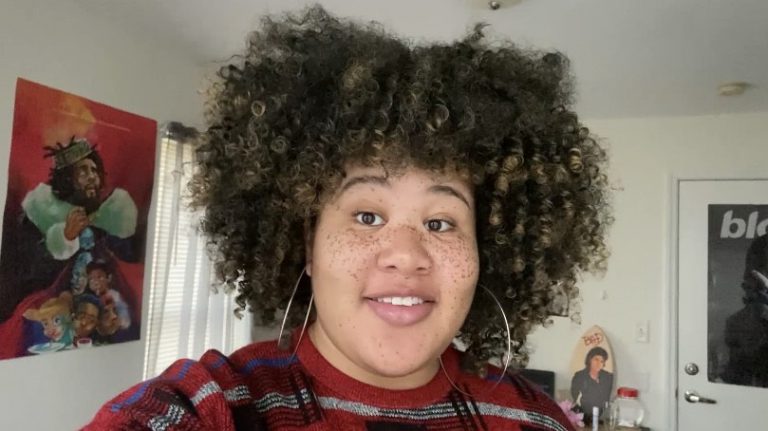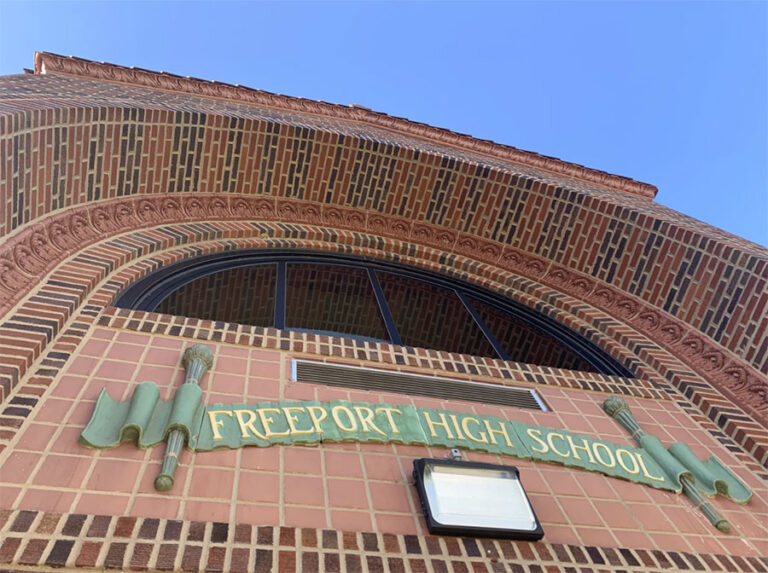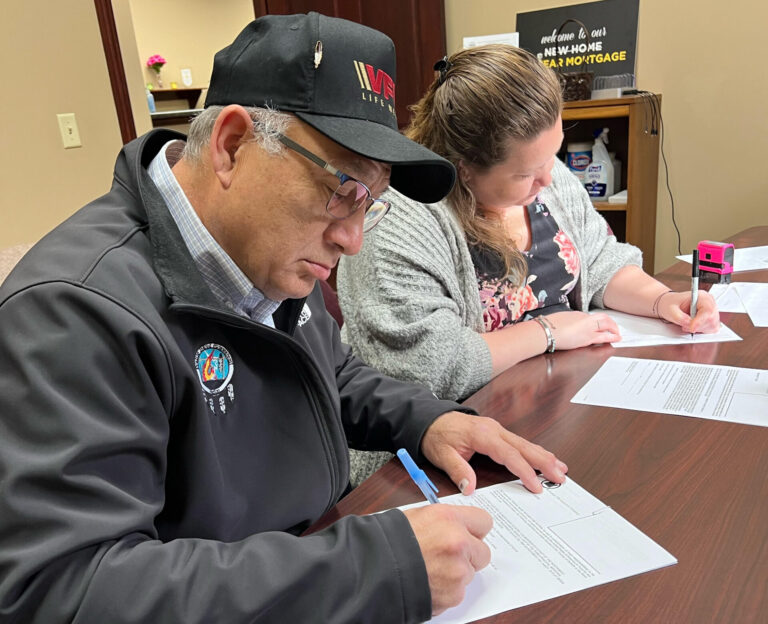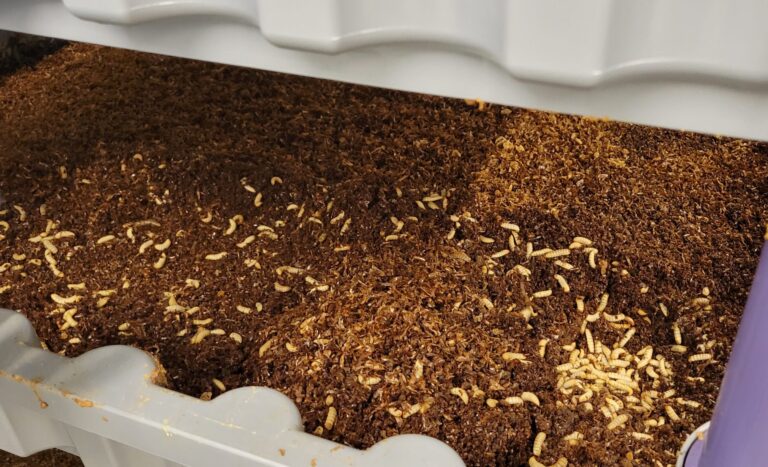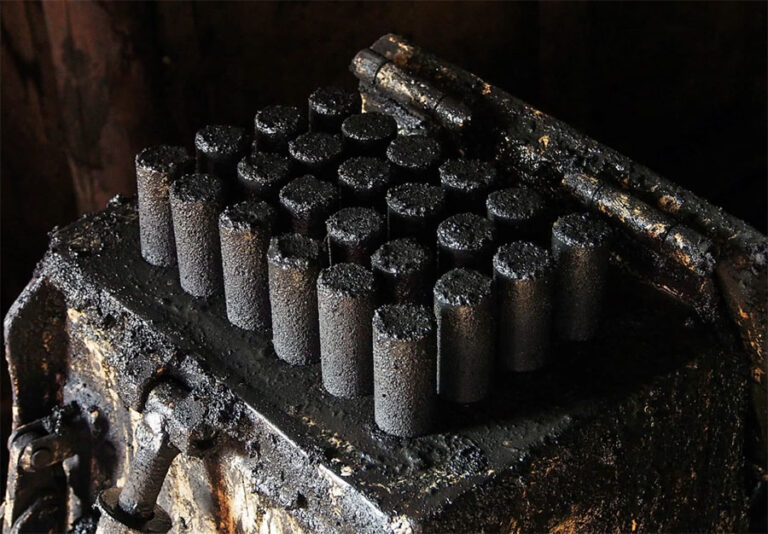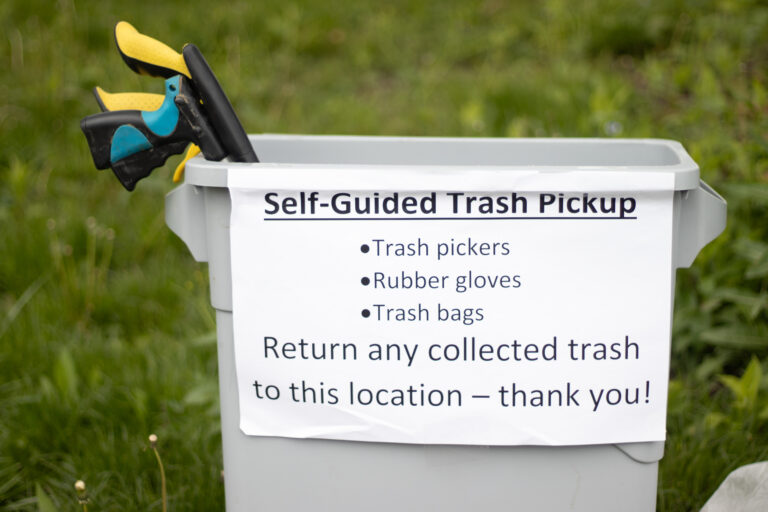One of Kenya Williams’s favorite classes is the broadcast journalism course she’s taking at the University of Illinois at Urbana-Champaign. That’s why she was devastated when she realized all of her university classes would be moving online in an effort to contain the spread of COVID-19, the illness caused by the coronavirus.
Like many institutions across the country, the University of Illinois suspended face-to-face instruction last month. Moving from in-person classes to digital learning, however, is easier for some courses than for others.
Ken Erdey is Williams’ professor. He teaches broadcast journalism at the university and supervises a team of students that work on a live, weekly morning show called “Good Morning Illini,” akin to a student version of NBC’s “The Today Show.”
Under normal circumstances, students meet as a group on Mondays to prep for their live Friday show. Throughout the week, student producers write transitions for the show and keep an eye out for breaking news on campus. All pre-recorded segments must be filmed by the end of day Thursday, and students rehearse and shoot the live half-hour show on Friday morning. They also take turns hosting the show. The finished product, which is filmed in a studio on campus, airs on a local Comcast channel.
Erdey says he also posts the show to the class’ YouTube channel and Facebook. This semester, he launched a new companion show called “Illini Sports Night” featuring interviews with a selection of the university’s Big Ten athletes.
But all of that work was cut short when COVID-19 began spreading across the U.S.
Students recorded one last in-studio episode of “Good Morning Illini” before spring break. It included a final segment that featured videos recorded by seniors explaining how much working on the show meant to them. The students gathered as a group on camera for the last shot, and some wiped tears from their eyes.
Williams, a junior, was among the students in the final group shot. She says she loved being on-camera and had dreamed of working on the show.
“I thought like, wow, I’m finally being part of GMI like, for real and now is being snatched away from me because of this virus,” Williams says.
Erdey says he initially had no idea how he’d take a class rooted in hands-on learning and on-the-ground reporting into a digital environment with students scattered across the state.
“If you stop and think about what a studio production class is, you’re in studio with live things happening. So, we have guests come in. We have camera people. We have our anchors doing their thing” Erdey says. “I didn’t see a potential of how do I teach a live studio broadcast class, in an online format.”

Other journalism programs across the country have grappled with the same problem. Mark Lodato, associate dean at Arizona State University’s Cronkite School of Journalism and Mass Communication, says his students typically produce about a half-hour newscast for the Arizona PBS station every night.
“So there’s a news juggernaut, so to speak, that has been disrupted,” Lodato says. “What it does is it forces both faculty members and students to get very creative and innovative and frankly that’s good.”
Lodato says students at the Cronkite School are now creating video content using their cell phones while they shelter in place at home.
“In an amazing way, we have students who are unearthing creative ways to produce their visual pieces, and that’s doing a lot of interviews over Zoom, shooting stand ups in their homes, doing weather reports in front of their television monitor and figuring out how to upload the proper graphics and everything else. So we’ve seen a real uptick in the creativity in the storytelling and presentation,” he says.
Erdey, the University of Illinois professor, says he also had to get creative to ensure that his class could survive the shift to digital learning. He spent his spring break building a website with the help of YouTube tutorials and a template he purchased online. Erdey previously worked as a photographer and editor for TV news stations throughout Illinois, but web design is entirely new to him.
“For the most part, I just don’t understand that realm of technology, and how to make it work,” he says. “I was having 12 hour days of sitting on my computer trying to figure out how do I build this website, how do I make it look like it’s professional?”
By the end of spring break, Erdey had a website, but he didn’t know what to assign his students to do for it. He found inspiration online.
“This video popped up on my feed at some point… it was from the Italians when they were 10 days into their quarantine. And it’s just people telling their stories to themselves 10 days later, and I was like, you know, maybe I can do something with that,” he says.
Erdey asked his students to file vlogs — video diaries — from wherever they happened to be and then posted them to the website. He says the goal was for students to report on how the pandemic had affected their lives.
He says Williams, in particular, had an important story to tell. While she’s from Chicago, Williams is currently living and working in Champaign. For her first vlog, she chose to list things that had taken an unexpected turn in her life as a result of the virus.
“At first, I didn’t have a computer… I will admit I’d go to the (campus) library to use our resources, use the computer. So when they said like we’re transitioning to online classes, I was like, well, I don’t have a computer. So what am I going to do? So I had to use my old phone and use Zoom through my phone and things like that. So that was an unexpected turn.”
Williams says she’s since borrowed a friend’s spare computer. But when she recorded that initial vlog on her cell phone, she wasn’t able to edit and post it online. She sent her raw material to Connor Ciecko, another junior at the U of I, and a producer for the Good Morning Illini show. Like Williams, Ciecko loves working on Good Morning Illini, and despite the disruption, he says he remained optimistic they’d continue to produce content in whatever form they could.
“We are in such an incredibly unique situation. If you look at other classes, they can teach online so easily,’ Ciecko says. “Good Morning Illini is so rooted in being on the ground covering the campus and just being in that studio reporting on it that we have had to completely rework this.”
Ciecko sees a lot of benefits to the current situation. He says it’s forced him to be versatile and develop skills he thinks will be valuable to a future employer. Ciecko is shooting his own vlogs from his parents’ home in Western Springs, a Chicago suburb.
“I’m shooting on my phone. The audio is not fantastic, the video is not fantastic, the lighting is not fantastic. So I’m learning how to work with those, to work around those and to keep up the production value, and to further the production value of the things that I’m producing,” Ciecko says. He also hopes that work he and his peers creates serves as an important record of what this pandemic was like for college students in Illinois.
Erdey, the U of I professor, says he has impressed upon his students how important it is for them to tell their own stories during this time.
“This is a class about living in a historical moment. And living in a time or telling a story is the most important thing that we can do. And their story matters. And they have done nothing but step up to that and present content that does everything I asked them to do and more. And that’s pretty amazing.”

